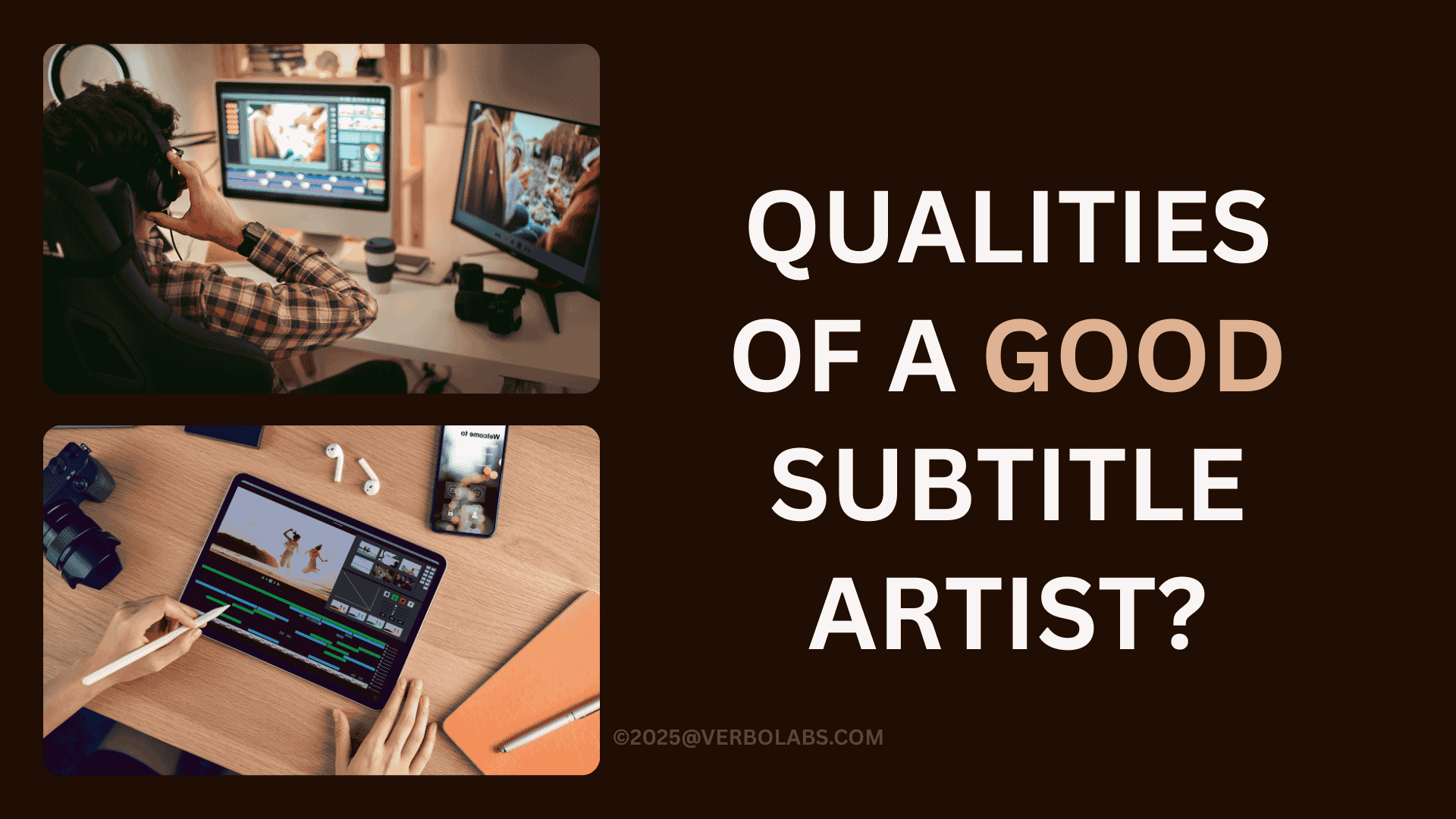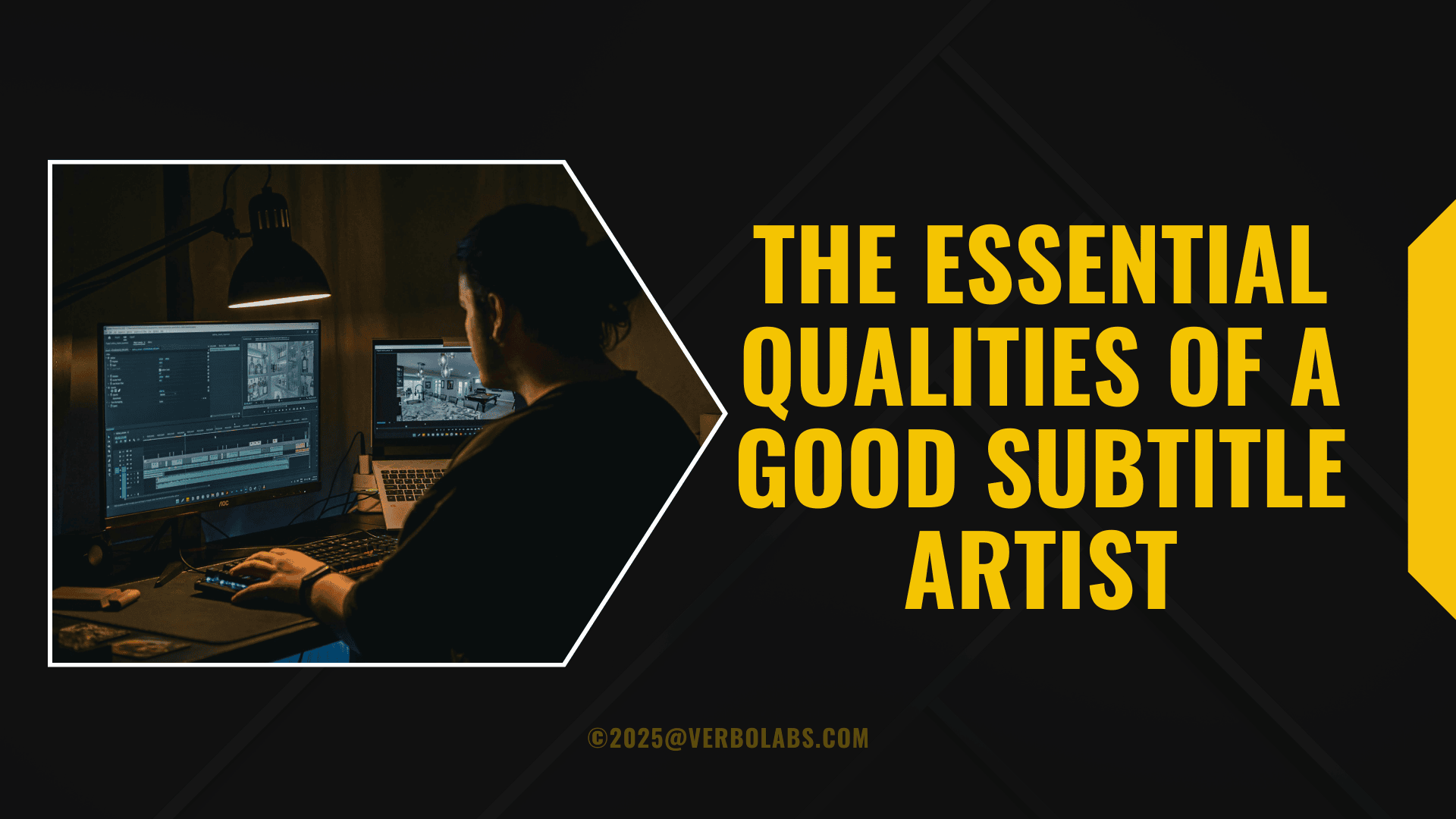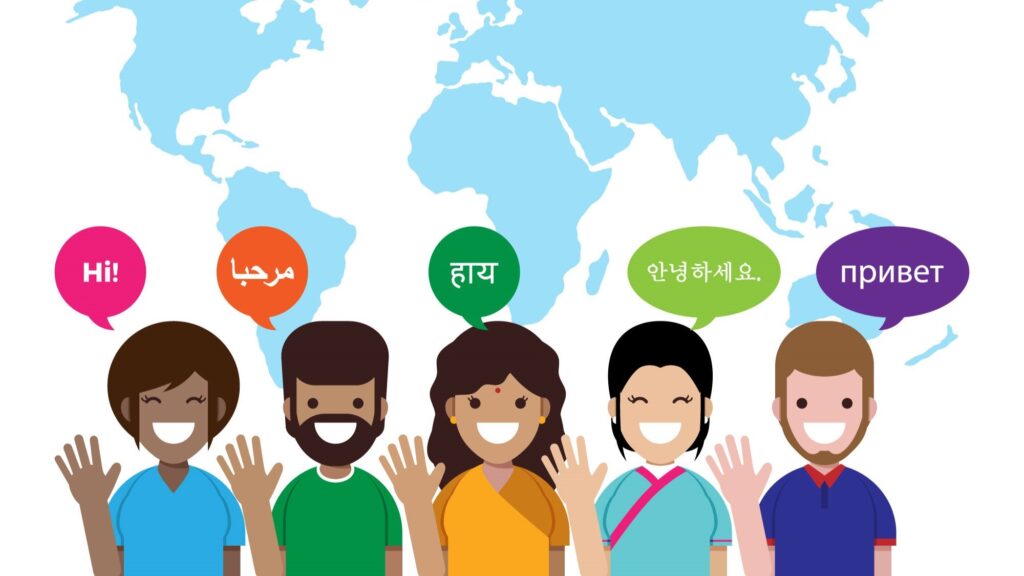
In today’s fast-paced digital era, subtitling and translation have become indispensable for films, OTT platforms, YouTube creators, and businesses creating global content. Understanding the Qualities of a Good Subtitle Artist is crucial, as subtitles are no longer just a way to translate foreign-language movies—they’re also essential for accessibility, audience engagement, and global reach.
So, what is subtitling exactly? At its core, subtitling is the process of transcribing or translating dialogue into written text displayed on screen. It can be intralingual (same-language subtitles, often for the deaf or hard-of-hearing) or interlingual (translation of dialogues into another language).
A skilled subtitle artist (or subtitler) ensures that these subtitles are not only accurate but also readable, properly timed, and culturally relevant. But to achieve this, subtitlers need to master both linguistic expertise and technical skills. Let’s explore the qualities of a good subtitle artist in detail.
Types of Subtitles and Their Importance
Before diving into the qualities of subtitlers, it’s important to understand the types of subtitles commonly used today:
1. Hard Subtitles
- Burned into the video file and cannot be removed.
- Common in movie credits or trailers.
- Example: When you stream a film with embedded subtitles on older DVDs.
2. Soft Subtitles
- Separate from the video and stored in subtitle file formats such as SRT, SBV, or XML.
- Users can enable or disable them.
- Example: Netflix, YouTube, and Prime Video often use soft subtitles.
Example: Imagine you’re watching an anime film in Japanese. Hard subtitles would already be part of the video and always visible, whereas soft subtitles allow you to toggle captions on/off or even choose multiple languages.
Textual and Formal Constraints in Subtitling
Subtitling is not the same as document translation—it has unique constraints:
- Textual Constraints: The need to shorten subtitles to fit the reading speed. For example, long dialogues in detective movies may need to be condensed without losing meaning.
- Formal Constraints: Rules like the maximum number of characters per line, synchronization with audio, and duration of subtitle display.
Example: In a fast-paced action movie, a line like “We’ve got to move, now!” must appear instantly on screen, not delayed, or it will confuse viewers. Similarly, in a slow romantic drama, subtitles need to linger longer to match the pacing.
The Essential Qualities of a Good Subtitle Artist

The essential qualities of a good subtitle artist go beyond language fluency—they require accuracy, timing, cultural awareness, and technical expertise. A skilled subtitler ensures subtitles are clear, contextually accurate, and synchronized with dialogue to deliver a seamless viewing experience. Here are few imporatant qualites of a good subtitle artist.
1. Linguistic Expertise
A subtitle artist must be fluent in both the source and target languages. More importantly, they must understand cultural context, slang, and idioms.
- Example: The English phrase “Break a leg” cannot be literally translated into Spanish. A good subtitler adapts it to a phrase with equivalent meaning, such as “¡Mucha suerte!”
2. Accuracy and Precision
A subtitle translator must balance accuracy with brevity. Subtitles often need to be shorter than the spoken dialogue to keep pace with reading speed.
- Example: The spoken line “I cannot believe you went behind my back and did this without telling me” might be shortened in subtitles to “I can’t believe you did this secretly.”
3. Timing and Synchronization Skills
Subtitles must appear exactly when the dialogue is spoken and disappear at the right moment. Poor timing ruins the viewing experience.
- Example: In movie subtitling, if a character says “Hello” and the subtitle appears two seconds later, it creates confusion.
4. Adaptability Across Genres
Different genres have different subtitling challenges:
- Action movies: Short, fast dialogues—easier to subtitle.
- Romantic movies: Longer, emotional dialogues—require careful condensation.
- Detective movies: Complex clues and layered conversations—require precision.
5. Technical Knowledge
A subtitle artist must be comfortable with subtitling software and various subtitle file types such as SRT, VTT, or SBV.
- Example: For YouTube, an SRT file can be uploaded directly, whereas broadcasters may require STL or XML.
6. Cultural Sensitivity
Subtitles are not just about translation—they are about localization. A subtitle artist must ensure phrases, jokes, and references resonate with the target audience.
- Example: A Bollywood movie subtitled for U.S. audiences may replace a reference to “Diwali sweets” with a cultural equivalent if needed.
Subtitling vs. Translation: The Key Difference
While translation is word-for-word, subtitling translation demands brevity, timing, and audience comprehension. Subtitles often need to condense information without losing meaning, making it a specialized skill.
This is why translation and subtitling are closely related but not identical. Subtitlers must act as both translators and storytellers.
Why Businesses Need Professional Subtitling Services
Today, subtitling is not limited to films—it’s crucial across industries:
- Entertainment & OTT: Movie subtitling helps reach global audiences.
- Corporate training: Subtitles improve learning outcomes in multilingual e-learning videos.
- Marketing: Brands add subtitles to social media videos to boost engagement.
- Accessibility: Subtitling helps deaf and hard-of-hearing communities access content.
DIY solutions like auto-generated captions often fail due to errors. Professional subtitlers ensure accuracy, cultural relevance, and compliance with global subtitling standards.
At VerboLabs, we specialize in subtitles and translation for films, e-learning, and corporate content across 120+ languages.
Practical Examples of Effective Subtitling
- Parasite (2019) – The Oscar-winning Korean film used expert subtitling translation, making Korean cultural elements accessible to global audiences without losing essence.
- YouTube Tutorials – Many creators now learn “how to add subtitles to a video” using SRT files, but professional subtitling ensures quality beyond auto-captioning.
- Corporate Videos – Multinational companies add multilingual subtitles to training content, ensuring consistency and accessibility across regions.
The Role of Subtitling Software in 2025
Modern subtitling has gone digital, with powerful subtitling software and online subtitling platforms making the process easier.
Popular Tools
- Aegisub – Known for its advanced timing features and flexibility for creative subtitling projects.
- Cons: No longer actively maintained, steep learning curve for beginners, and limited support for newer subtitle file types.
- Cons: No longer actively maintained, steep learning curve for beginners, and limited support for newer subtitle file types.
- Subtitle Edit – A free, open-source editor that supports multiple subtitle file formats like SRT, VTT, and ASS.
- Cons: While versatile, it can crash on large projects, lacks advanced collaboration features, and may require technical know-how for complex exports.
- Cons: While versatile, it can crash on large projects, lacks advanced collaboration features, and may require technical know-how for complex exports.
- EZTitles – A professional-grade software widely used by broadcasters for movie subtitling and TV shows.
- Cons: Expensive licensing, limited accessibility for freelancers or small teams, and requires significant training to use effectively.
Example: A subtitler working on a Netflix series might use Subtitle Edit to adjust line breaks, synchronize subtitles with audio, and export in the required subtitle file format. However, without professional QC, inconsistencies or sync errors can slip through.
Why Choose VerboLabs Subtitling Services?

While online subtitling tools are helpful, they often come with challenges—technical complexity, inconsistent quality, or a lack of cultural adaptation. This is where VerboLabs’ professional subtitling services stand out.
How VerboLabs Solves the Common Issues
- Ease of Use vs. Complexity: Unlike tools such as Aegisub, which require technical expertise, VerboLabs provides end-to-end subtitling solutions—no need for you to manage file types or software.
- Scalability and Reliability: Tools like Subtitle Edit can struggle with large projects, but VerboLabs uses enterprise-grade workflows that ensure accuracy across thousands of subtitle lines for films, OTT platforms, and e-learning content.
- Cost-Effectiveness: Unlike expensive solutions like EZTitles, VerboLabs offers affordable subtitling services without compromising on professional quality.
- Cultural Relevance: Beyond technical precision, our subtitlers adapt humor, idioms, and context to make content resonate with local audiences.
Related Services for Complete Media Localization
Alongside subtitling, VerboLabs also provides:
- Dubbing Services: Perfect for movies and series that need voice adaptation in multiple languages.
- Translation Services: Ensuring scripts and dialogue maintain accuracy across languages.
- Closed Captioning: Adding accessibility features for the deaf and hard-of-hearing.
With these integrated solutions, VerboLabs ensures that your content is not only subtitled but fully localized for global reach.
Final Thoughts
Subtitling is more than placing text on screen—it’s a craft that blends translation, timing, and cultural adaptation. A good subtitle artist must be a linguist, a technician, and a storyteller, all at once.
In 2025, as video consumption grows worldwide, businesses that invest in professional subtitling services and prioritize the Qualities of a Good Subtitle Artist will see stronger engagement, wider reach, and improved accessibility.
If you want to elevate your video content with expert subtitling, partner with VerboLabs. Our team delivers accurate, culturally relevant, and cost-effective subtitling solutions across global and regional languages.

Unlock global growth with VerboLabs—faster, cost-effective, and consistent translations powered by Translation Memory.



